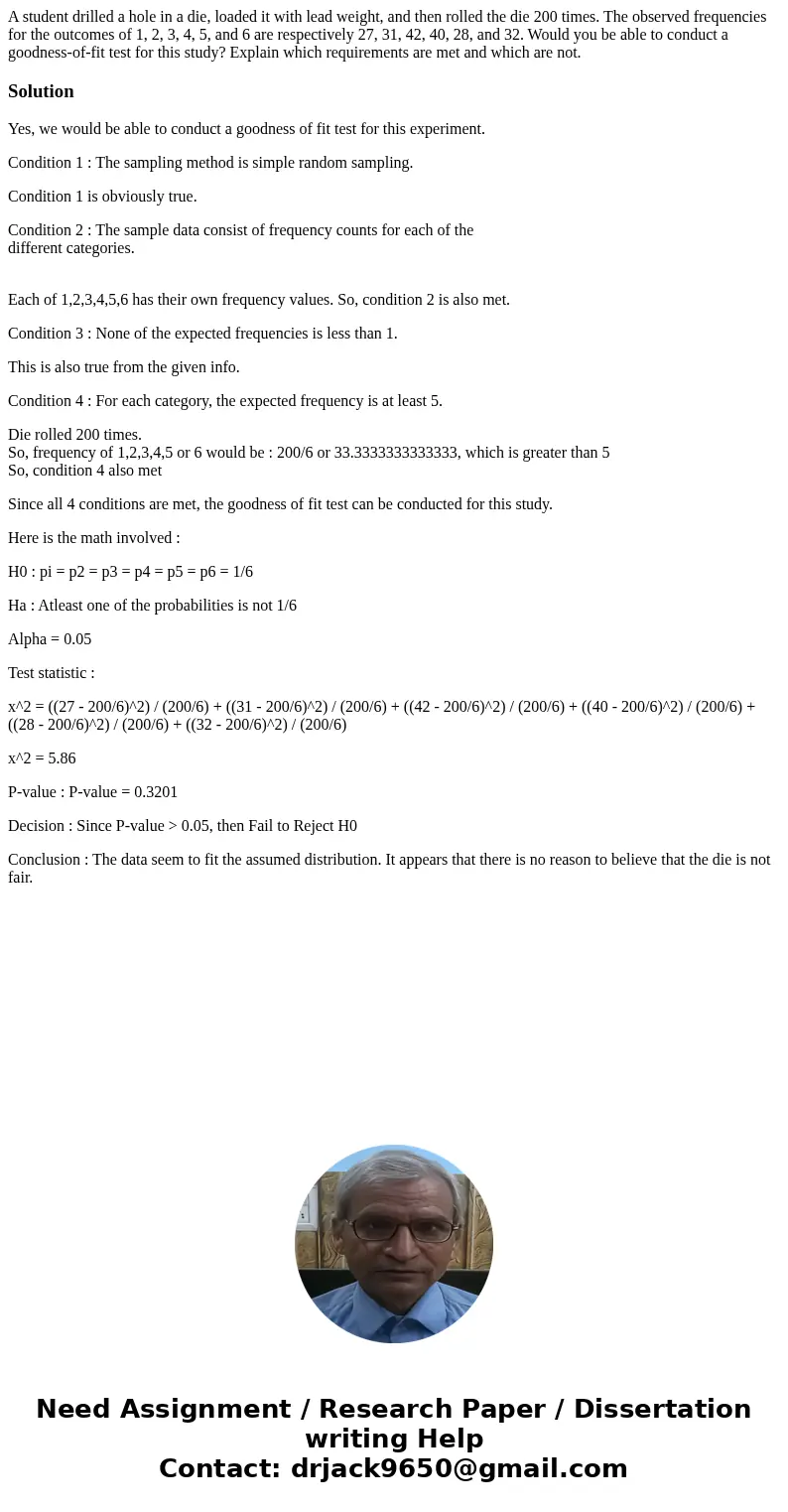A student drilled a hole in a die loaded it with lead weight
A student drilled a hole in a die, loaded it with lead weight, and then rolled the die 200 times. The observed frequencies for the outcomes of 1, 2, 3, 4, 5, and 6 are respectively 27, 31, 42, 40, 28, and 32. Would you be able to conduct a goodness-of-fit test for this study? Explain which requirements are met and which are not.
Solution
Yes, we would be able to conduct a goodness of fit test for this experiment.
Condition 1 : The sampling method is simple random sampling.
Condition 1 is obviously true.
Condition 2 : The sample data consist of frequency counts for each of the
different categories.
Each of 1,2,3,4,5,6 has their own frequency values. So, condition 2 is also met.
Condition 3 : None of the expected frequencies is less than 1.
This is also true from the given info.
Condition 4 : For each category, the expected frequency is at least 5.
Die rolled 200 times.
So, frequency of 1,2,3,4,5 or 6 would be : 200/6 or 33.3333333333333, which is greater than 5
So, condition 4 also met
Since all 4 conditions are met, the goodness of fit test can be conducted for this study.
Here is the math involved :
H0 : pi = p2 = p3 = p4 = p5 = p6 = 1/6
Ha : Atleast one of the probabilities is not 1/6
Alpha = 0.05
Test statistic :
x^2 = ((27 - 200/6)^2) / (200/6) + ((31 - 200/6)^2) / (200/6) + ((42 - 200/6)^2) / (200/6) + ((40 - 200/6)^2) / (200/6) + ((28 - 200/6)^2) / (200/6) + ((32 - 200/6)^2) / (200/6)
x^2 = 5.86
P-value : P-value = 0.3201
Decision : Since P-value > 0.05, then Fail to Reject H0
Conclusion : The data seem to fit the assumed distribution. It appears that there is no reason to believe that the die is not fair.

 Homework Sourse
Homework Sourse